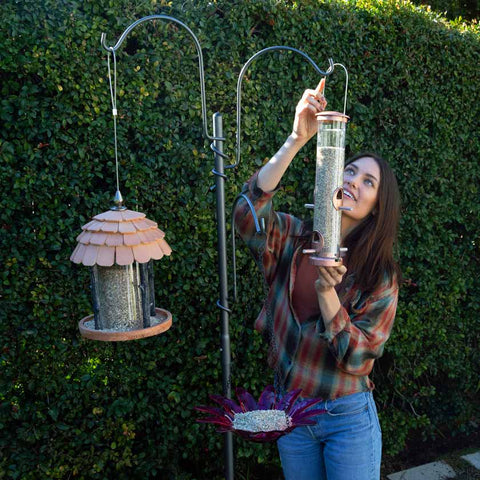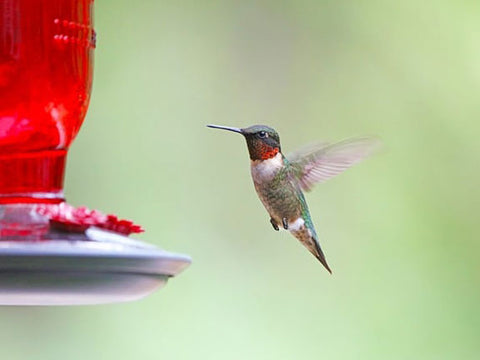Welcome to the enchanting world of bird-friendly gardening, where the melodious tunes of feathered friends become the soundtrack of your outdoor haven. In this blog post, we'll embark on a journey to discover the joy of creating a bird-friendly paradise right in your backyard. So, grab your gardening gloves and let's dive into the vibrant world of avian allure!
Choosing Bird-Friendly Plants
Native Plants for Your Region
Start your bird-friendly garden journey by embracing local flora. Native plants provide birds with familiar food sources and shelter, creating a harmonious ecosystem. Whether it's the Eastern Bluebird or the Western Tanager, native plants ensure your garden is a welcoming haven for local bird species.
Plants with Berries and Seeds
Birds love a buffet, and your garden can be their favorite dining spot. Choose plants that produce berries and seeds, such as elderberry bushes, sunflowers, and coneflowers. Not only do these plants add a burst of color to your garden, but they also offer a smorgasbord of treats for your feathered friends.
Colorful and Fragrant Flowers
Why not make your garden a sensory delight for both you and the birds? Opt for colorful and fragrant flowers like bee balm, salvia, and lavender. These not only attract pollinators but also add a touch of elegance to your outdoor space, creating a win-win for everyone.
Providing Bird-Friendly Habitat
Creating Bird-friendly Landscapes
Birds need more than just food; they need a home. Design your garden with various levels, incorporating trees, shrubs, and ground cover to create a diverse landscape. This provides birds with places to perch, hide, and build their nests, turning your garden into a lively neighborhood for our avian friends.
Installing Birdhouses and Nesting Boxes

Give your garden's inhabitants a cozy place to call home by strategically placing birdhouses and nesting boxes. This not only adds a charming aesthetic but also invites a variety of bird species to set up residence in your garden. Get ready to witness the delightful spectacle of bird families thriving in your carefully crafted abodes. The Yard Tree Bird Feeding Station is ideal for hanging multiple feeders and it includes a birdbath to make your feathered friends happy.
Designing Bird-friendly Water Features
Quench the thirst of your feathered guests by incorporating bird-friendly water features. Birdbaths, small ponds, or even a strategically placed shallow dish can attract a myriad of bird species. Watch them splash, drink, and revel in the refreshing oasis you've provided.
Avoiding Harmful Practices
Limiting Pesticide Use
A healthy garden is a haven for birds, and that means saying no to harmful pesticides. Opt for natural alternatives to keep pests at bay, preserving a safe and welcoming environment for both your plants and the resident birds. If you must use poison for a really bad pest problem, be sure to get it deep into the tunnels with the Gopher Bait Applicator so everything stays away from the surface.
Safe Weed Control Methods
Weeding doesn't have to harm your avian visitors. Explore bird-friendly weed control methods, such as mulching or hand weeding. Not only will your garden remain pristine, but it will also be a safe space for birds to forage without the threat of harmful chemicals.
Responsible Feeding Practices

While providing supplemental bird feed can be a delightful way to attract more species, it's crucial to do so responsibly. Choose high-quality bird feed and clean your feeders regularly to prevent the spread of disease. It's a small effort that goes a long way in maintaining a healthy bird community. Hummingbird feeders should be filled with a solution that's four parts water to one part sugar. No artificial color is necessary. Just use a red feeder. Sometimes yellow attracts bees so if that's a concern avoid feeders with yellow flowers.
Bird Watching Tips in Your Garden
Setting up Bird Watching Stations
Create cozy nooks in your garden equipped with comfortable seating and binoculars. These bird watching stations are perfect for lazy afternoons spent observing the intricate lives of your avian neighbors.
Documenting Bird Species
Keep a garden journal to document the various bird species that visit. Capture their behaviors, nesting habits, and any unique interactions you witness. It's a fun way to deepen your connection with nature and contribute valuable data to bird conservation efforts.
Engaging with Citizen Science Projects
Join hands (or wings) with fellow bird enthusiasts through citizen science projects. Platforms like eBird and Project FeederWatch allow you to contribute your bird sightings, aiding researchers in understanding bird populations and behaviors.
Overcoming Common Challenges
Dealing with Unwanted Pests
Every garden has its challenges, but there are bird-friendly solutions. Invite insect-eating birds like chickadees and titmice to help control pest populations naturally. It's a symbiotic relationship where birds get a meal, and your garden stays pest-free.
Balancing the Ecosystem
Maintaining a balanced ecosystem is key to a thriving bird-friendly garden. Monitor your garden's health, observe the interactions between different species, and make adjustments as needed. Creating a sustainable environment ensures the longevity of your avian haven.
Seasonal Considerations
Keep in mind the changing seasons when planning your bird-friendly garden. Provide shelter and food sources year-round, ensuring that your feathered friends have a reason to visit in every season.
Conclusion
As we wrap up this journey into the world of bird-friendly gardening, take a moment to appreciate the transformation you've initiated. Your garden is now more than just a collection of plants; it's a thriving ecosystem where birds and humans coexist harmoniously. By adopting these practices, you've not only created a haven for our feathered friends but also contributed to the larger tapestry of biodiversity. So, keep your eyes to the skies, listen for the sweet melodies, and revel in the magic of your bird-friendly garden!




